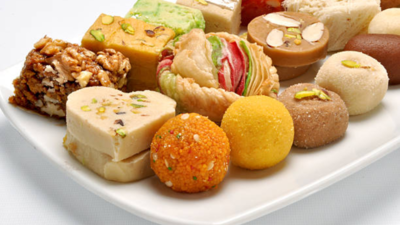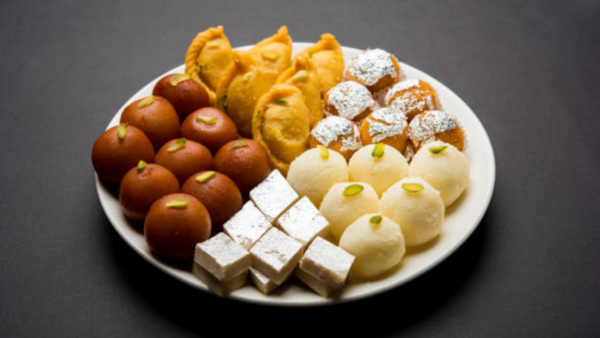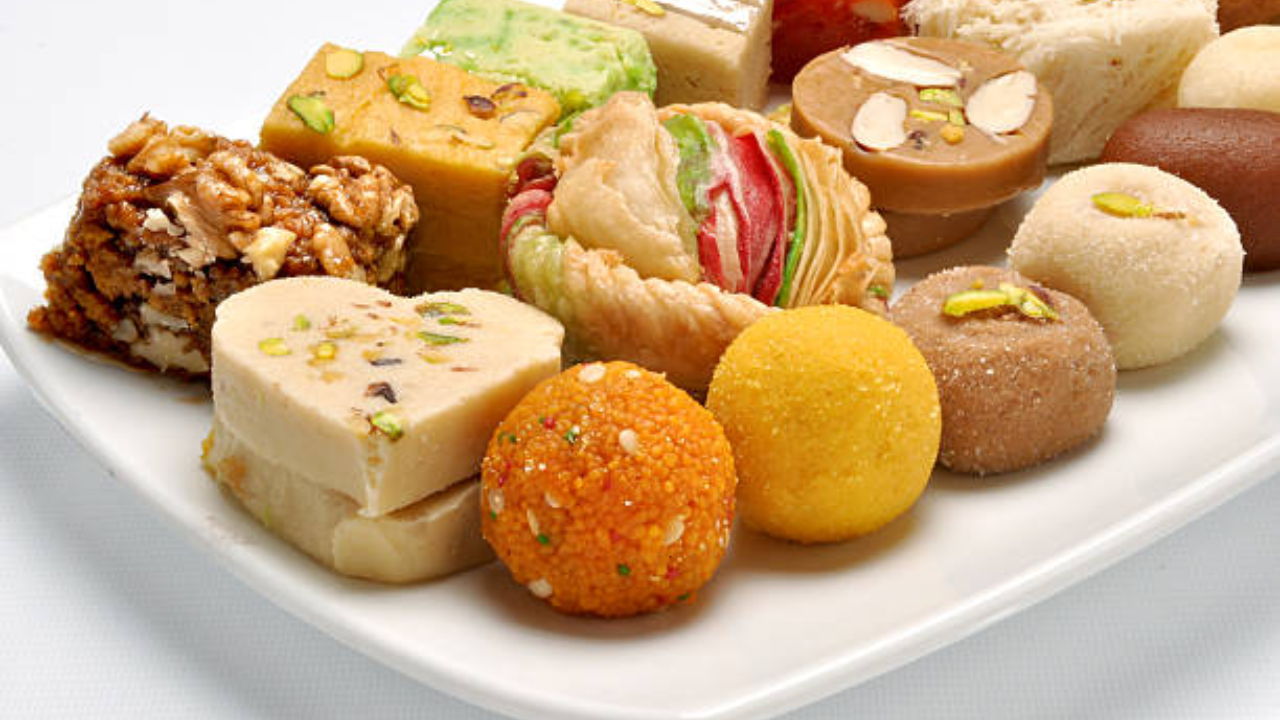11% of Indians are diabetic
India has a substantial population at risk of cardiovascular disease and other long-term organ complications
If you are on social media, you must have definitely come across posts and memes about gaining weight after indulging in foods prepared during festivals. One such funny post is: “sweet box pe 500 grams likha tha, pata nahi 2 kgs weight kaise badh gaya.” It’s time we decode this funny meme, now that we have just finished binge-eating during Diwali!
Festive seasons come around with quite mouthwatering foods, sweets, and feasting galore, which, when eaten mindlessly, results in weight gain. Traditional treats tend to have loads of sugar and fat, adding calorie intake, especially when there is less physical activity. Generally, late-night celebrations over unhealthy drinks and frequent indulgence lead to increased calorie intake.
Mithai, the rich, sugary sweets beloved across Indian culture, often bring both joy and guilt to our lives. With festivals, family gatherings, and celebrations around every corner, indulging in mithai may feel unavoidable. Yet, a few grams of these sugary delights can accumulate into unexpected weight gain if consumed regularly.
Understanding the calorie density of mithai
One of the biggest reasons mithai contributes to weight gain is its high caloric density. Mithai is made with ingredients like sugar, condensed milk, ghee, and even oils, all of which are calorie-dense. For instance, a single piece of gulab jamun or barfi can have around 150-200 calories, mostly from sugar and fat. Since these calories are packed into a small volume, it’s easy to eat multiple pieces without realizing the caloric intake you are consuming.
Unlike fruits or vegetables that offer fiber, water, and nutrients, mithai lacks these elements and is primarily made of empty calories. This means that after consuming a few pieces, you might feel satisfied temporarily but often end up craving more due to sugar spikes.
The impact of sugar on weight gain
Sugar lacks any substantial nutrients, making it a form of empty calorie. Since mithai is primarily sugar-laden, consuming even a small amount contributes to an overall increase in daily caloric intake without any beneficial nutritional value.
Sugar is the prime culprit in mithai that leads to weight gain. The minute we consume sugar, our body absorbs it, and our blood sugar levels shoot up. This leads to their insulin release in leaps and bounds, which regulates the amount of sugar in blood by preserving excess glucose as fat. Repeated spikes in blood sugar will trigger insulin resistance, making it really difficult for the body to process sugars. In the long term, this may enter a cycle of weight gain and even pose an increased risk to even more serious conditions, such as Type 2 diabetes.
The role of fats in Mithai
Besides sugar, the fats present in mithai play a significant role in weight gain. Traditional mithai recipes often call for ghee or butter, both of which are saturated fats. While healthy fats in moderate amounts are beneficial, saturated fats can contribute to weight gain when consumed in excess.
These fats are highly calorie-dense, meaning that even small quantities can carry a large caloric punch. Consuming mithai regularly or in large quantities can lead to an imbalance in fat intake, as the body may start storing these extra calories as adipose tissue, or body fat.
Mithai is nutritionally imbalanced
One major reason mithai leads to weight gain is that it lacks dietary fiber, which is crucial for making us feel full. Foods high in fiber (like fruits, vegetables, and whole grains) are digested slowly, making us feel satisfied for longer. Mithai, however, digests quickly due to its high sugar and fat content and low fiber, causing us to feel hungry soon after.
As a result, it’s easy to over consume mithai since it doesn’t provide satiety. A few bites might satisfy our sweet tooth, but often, we end up reaching for a second or third piece. This habitual overeating, combined with high-calorie content, leads to a surplus in daily caloric intake, which over time results in weight gain.
The body’s metabolic response to sugar and fat is another factor that contributes to weight gain. When there’s an excess of calories—especially from sugar and fat—the body stores this excess energy as fat to use when food intake is lower. Since mithai provides quick, easily absorbed calories, it can overwhelm the body’s immediate energy needs, leading to storage.
Mithai is often consumed as a dessert after meals, it adds on top of an already sufficient calorie intake. These excess calories go unused in the short term, and the body’s default response is to store them as fat, leading to gradual weight gain if mithai is a regular part of the diet.
How to enjoy mithai without being guilty
While mithai can contribute to weight gain, it’s possible to enjoy it in moderation with a few mindful practices:
Instead of consuming multiple pieces, only take one small piece of your favorite mithai and enjoy each bite as it would taste even better this way.
Pair sweets with fiber and proteins. Absorption of sugar can become slower with these foods. For example, take a handful of nuts before consuming a sweet.
Mithai can be lighter on calories if one chooses to have sugar and fat in less quantity. Then sandesh or dry fruit-based sweets are the best option.
Tips to Manage Kids’ Sweet Cravings for Better Health
Mithai should be prepared at home as much as possible so that one can make the right choice in ingredients and cut down on sugar or use healthier alternatives.
Mithai should be saved for special occasions, thereby reducing daily consumption. That way makes the treat special and reduces the total calorie intake from sweets.
I’m Manas Ranjan Sahoo: Founder of “Webtirety Software”. I’m a Full-time Software Professional and an aspiring entrepreneur, dedicated to growing this platform as large as possible. I love to Write Blogs on Software, Mobile applications, Web Technology, eCommerce, SEO, and about My experience with Life.




